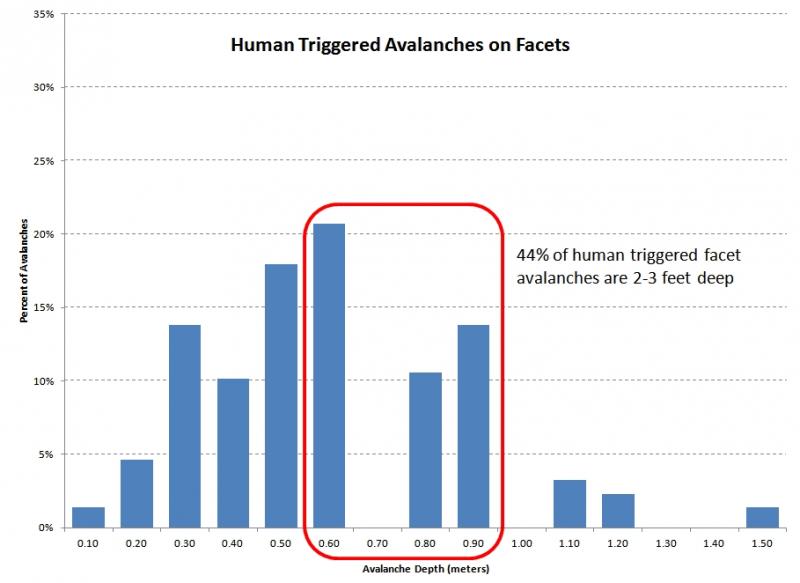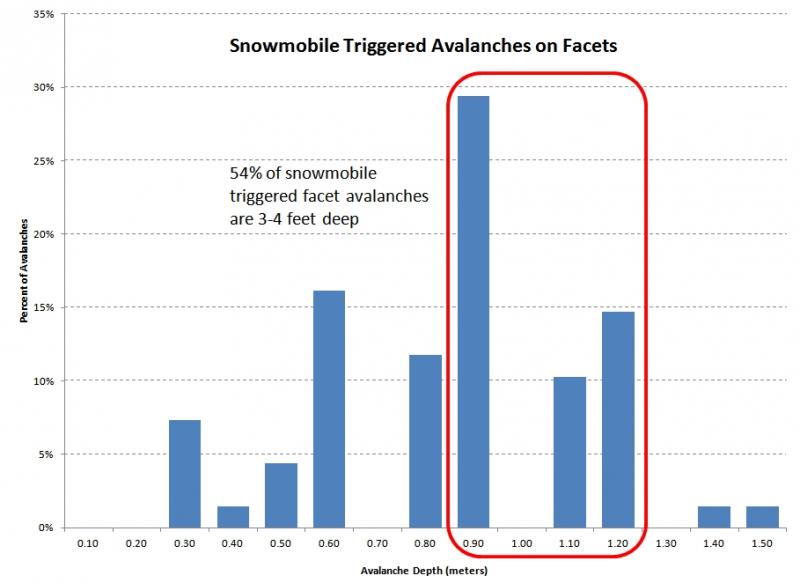
This season, like many others, started with early season snow that faceted and was subsequently buried by storms in November. This provided enough cover for the first turns of the year and also for human triggered avalanches. In prior years, this scenario has included a few significant accidents. Eventually it snows enough and the early season facets are a distant memory. What can we learn about this pattern from the Utah Avalanche Center’s database of reported avalanches?
In many cases these avalanches involving facets are quite deep. The chart below shows human triggered avalanches between about 2 and 3 feet deep involving facets are quite common (44% or 98 of 217). These avalanches are deeper than new snow instability avalanches that tend to be about 1 foot deep.

Avalanches of this size can have significant consequences for persons caught, particularly with thin cover. Currently our snowpack is generally less than 3 feet deep so the weak faceted snow is still well within the range where humans frequently trigger avalanches on facets. This is not a bad thing to keep in mind with additional snow coming this week. The facets probably aren’t yet a thing of the past.
For snowmobilers, the data shows avalanches involving facets are deeper than those triggered by humans. The chart below shows avalanches 3 to 4 feet deep are fairly common and represent 54% of the total number of snowmobiler facet related avalanches (37 of 68). Avalanches of this size are quite powerful.

By comparison, only 15 of 217 or 7% of avalanches triggered by humans that involve facets are deeper than 3 feet. While this comparison may be skewed to some degree by terrain selection, these early season facets may continue to be an issue for snowmobilers for some time.
There are also numerous examples that provide exception to these patterns. The Sheep Creek avalanche in Colorado was human triggered, involved early season facets and had an average crown height of 5 feet. Other relatively small, new snow avalanches have proven fatal.
Data from 2009 to current can be found here. Thanks for submitting your avalanche reports!
Andy Paradis is part of the Utah Avalanche Center's pro observer program and thoroughly enjoys snow related data. While not skiing in the Salt Lake area, he analyzes health care data for a living.
Great job Andy! Just another example of how rich our avalanche community is here in the Wasatch. Thanks much!
Drew Hardesty






